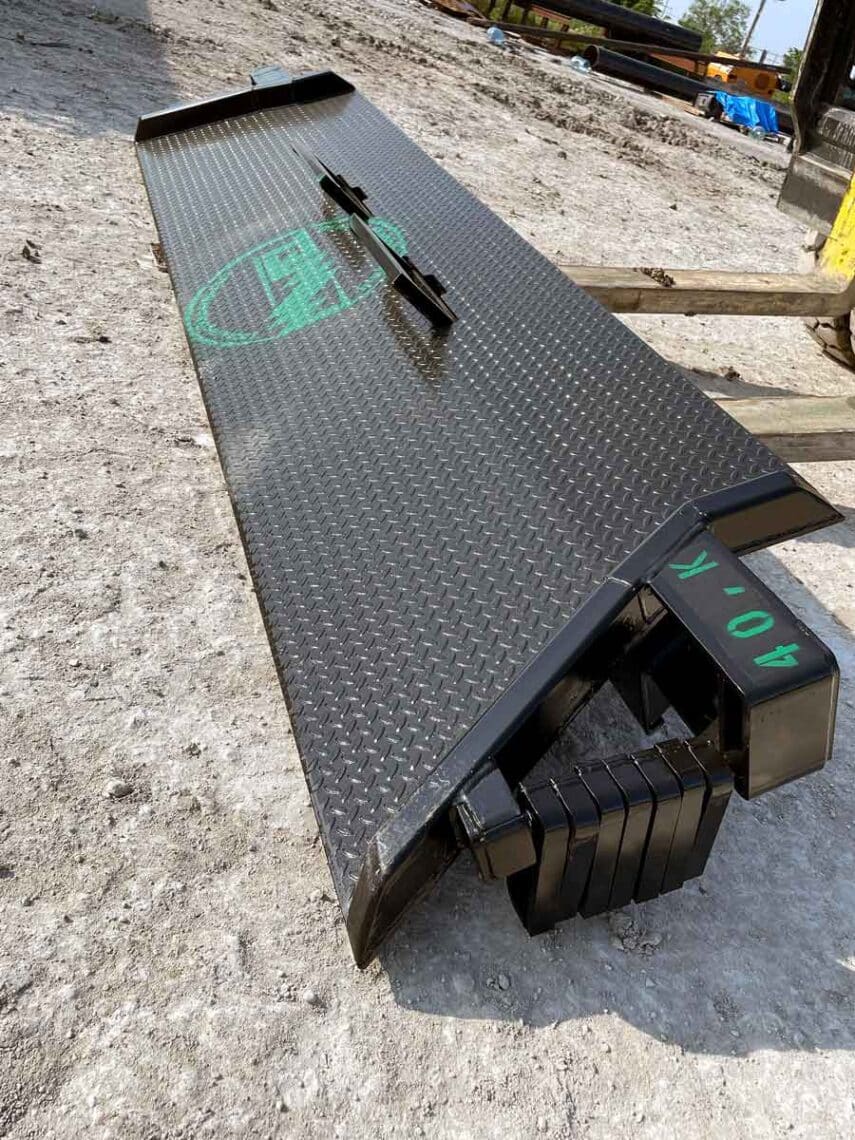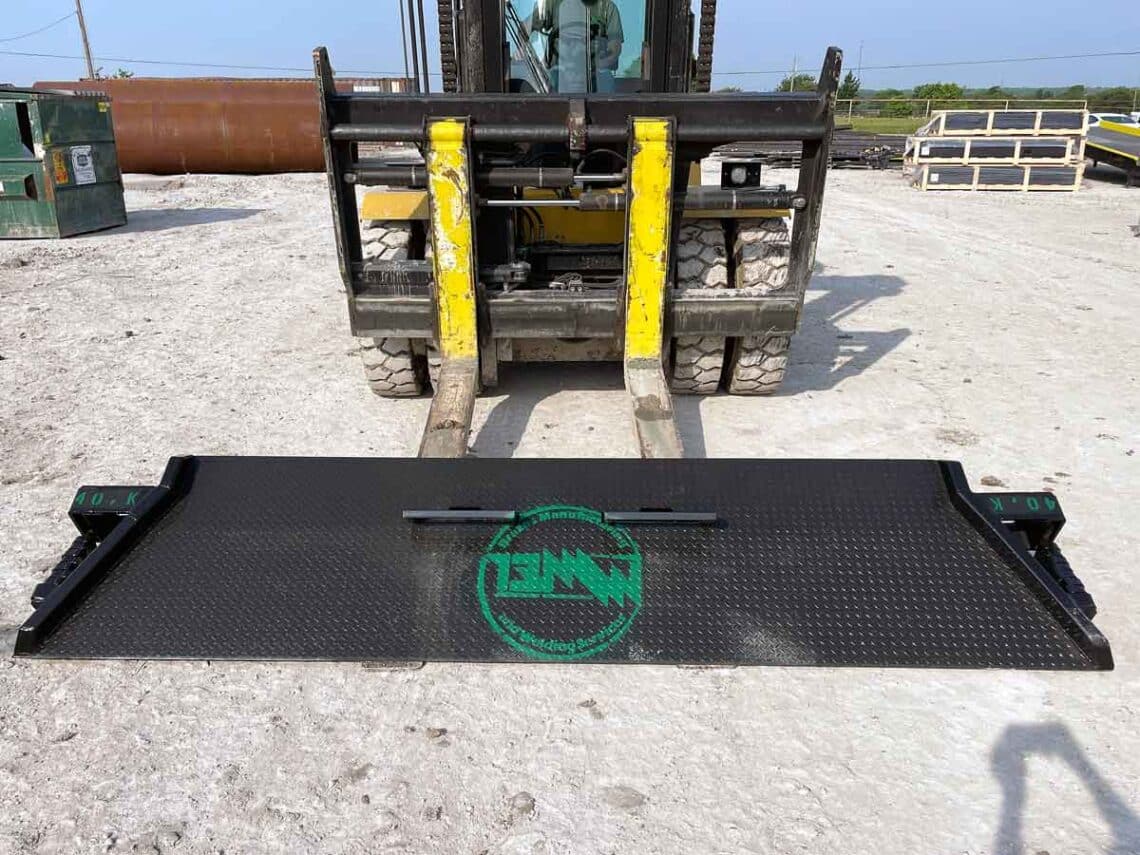One of the most complicated things we build is a rail board. It is a dock board for use loading and unloading materials on and off a rail car. Sounds easy. Not if it is done right.

How to configure a rail board
There are several on-site measurements at any loading dock to customize the fit to the job. The number of variables dealing with a railcar is easily doubled and makes for a much more complex engineering challenge. We furnish a Railboard Worksheet that explains the measurements necessary and one of the “Brazos Bunch” is available to help walk you thru the process.
Variables like:
- Dock height
- Dock width
- Distance from track (is it on a curve)
- Clearance from obstructions (walls)
- Type of forklift and accessories (roll clamps, etc)
- Load size and shape
and many others inform our engineers exactly how to configure and size our proven design.

When correct measurements are furnished the Brazos railboard will be picked up by its built-in lift loops and set into working position snugly. It will allow the forklift truck to transit in and out, loaded and unloaded…car after car…shift after shift. It will prove to be safe, reliable and cost effective.
Partial list of materials that commonly travel by rail…
- Rolled goods: Paper, plastic, steel & aluminum.
- Bulk commodities: These include agricultural products such as grain, coal, and oil, as well as industrial materials such as sand, gravel, and cement.
- Construction materials: This includes lumber, steel, and other materials used to build homes, businesses, and other structures.
- Automobiles and components: Cars, trucks, and other vehicles are often transported by rail.
- Chemicals: A wide variety of chemicals are transported by rail, including fertilizers, pesticides, and plastics.
- Food products: Foodstuffs such as fruits, vegetables, and processed foods are often transported by rail.
- Metals and minerals: This includes iron ore, copper, and other metals that are used to make a variety of products.
- Paper and pulp: Paper and pulp are used to make a variety of products, including books, magazines, and paper products.
- Hazardous materials: Some hazardous materials, such as explosives and radioactive materials, are transported by rail.